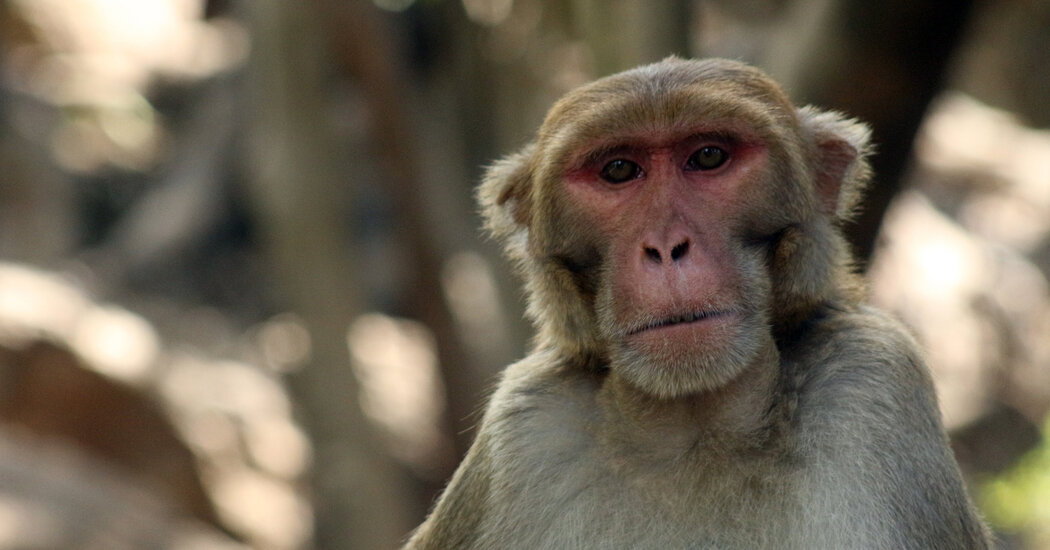Inspired by Jane Goodall, Onscreen and in Real Life
Jane Goodall is not a fan of television. In her limited free time, this renowned British primatologist and environmentalist may occasionally watch a wildlife documentary by her friend David Attenborough, or, after a hard day, “something mindless,” as she said in a recent video interview.
But usually, she doesn’t tune in. So it may surprise her admirers that she is now lending her wisdom and insights to a TV series for children, a 10-episode fictional blend of live action and computer-generated imagery titled “Jane.”
“So many people think that’s going to be me,” Goodall, who turned 89 this month, said of the show’s title character. But the high-spirited protagonist is Jane Garcia, a 9-year-old of Filipino and Mexican heritage with an insatiable curiosity. “I’m her hero,” Goodall explained, adding that young Jane, who adorns her walls with articles and photos, has “many bits and pieces from my life in her room.”
Bits and pieces from Goodall’s life also fill the series, which begins streaming on Friday on Apple TV+. Created by J.J. Johnson in collaboration with the Jane Goodall Institute, the global research and conservation nonprofit that Goodall founded in 1977, the show stars the 11-year-old actress Ava Louise Murchison as Jane, who, like Goodall as a child, is inseparable from her stuffed toy chimpanzee.
In the series, the toy is called Graybeard, a homage to the real David Graybeard, “the chimp who first let me into chimp society,” Goodall said. That tribute is echoed in the name of Jane’s human best friend, David (Mason Blomberg), a boy who accompanies her on her adventures.
What young Jane has most in common with Goodall, however, are her interest in nature and her commitment to take direct action in wildlife conservation. (The series is filmed mostly in Canada, but some episodes were shot on location in Africa and Costa Rica.) Each half-hour episode focuses on an endangered species — this first season, they include polar bears, blue whales, giant golden-crowned flying foxes and honeybees — and a research question that Jane is trying to answer: Why do whales sing? Why are worker bees disappearing?
Jane “wants to do something to make the world better,” said Goodall, who lent her imprimatur to the show and had final approval on all its scripts. “That’s the key, and she loves animals. So in those ways, she resembles me.”
The series began taking shape at an event presented by the Canadian offices of the Goodall Institute, where Johnson suggested that the institute work with his Toronto-based production company, Sinking Ship Entertainment (“Odd Squad,” “Ghostwriter”), to devise a children’s series inspired by Goodall’s mission.
In the show they brought to Apple, young Jane does fieldwork, just like her role model. But that exploration takes place entirely in the girl’s imagination. Viewers accompany the young characters on fantasy expeditions in which the stuffed Graybeard, who is very much a cast member, morphs into a real chimpanzee — although, like almost all of the onscreen wildlife, he is computer-generated. (The series hired Melinda Ozel, an expert on human facial expression, to develop Graybeard’s repertory of more than 300 emotional reactions.)
“We really wanted it to feel as real as Jane’s imagination,” Matt Bishop, the executive producer in charge of visual effects and animation, said of these scenes in a video interview. “When kids are playing,” he added, “and they’re taking on different characters and different roles, they’re visualizing.”
Bishop’s team worked with the paleontologist Stuart Sumida, who was a consultant to the film “Jurassic World,” to create the digital creatures. The use of C.G.I. ensured not only the young actors’ safety but also the freedom to shrink them visually to insect size, which happens in the episodes devoted to the honeybee and the monarch butterfly.
“We want this to offer unique views of animals that maybe kids haven’t seen in other shows or documentaries,” Johnson said. “So we need to be able to get into that beehive, we need to be underwater.”
Almost every episode begins with one of these imaginary action-adventure segments, which subsequently result in real-world discoveries. When Jane’s single mother (Tamara Almeida) meets an attractive man (Dion Johnstone) in their apartment complex — the series’s North American location is deliberately vague — the adults flirt. Their banter leads Jane to infer, correctly, that the strange noises made by gharials, long-snouted crocodilians native to India and Nepal, are part of an effort to find a mate.
Such human plotlines are part of every episode, Johnson said, noting that viewers will care about endangered wildlife only if “we find a way to see ourselves reflected in this animal.” He cited the episode about the monarch, whose long, multigenerational migration “dovetails so naturally into an immigration story about families.” As part of that narrative, Jane tries to persuade a neighbor to plant milkweed, monarchs’ only food.
Not all Jane’s efforts go smoothly, however. Her passion sometimes causes her to be abrasive and even rude, initially alienating people like Robin, a local resident played by the guest star Mary-Louise Parker.
“The other thing this show really does is show kids how to navigate through an adult world — how you have to behave,” said Andria Teather, an executive producer of the series and a senior adviser at the Jane Goodall Institute Global. “And I think all of those things very much resonate with the things that Jane Goodall talks about, how you have to go calmly and peacefully.”
But if Jane is not always easygoing, she is resolute, and her efforts underscore one of her idol’s core beliefs. “Every single person makes an impact every single day,” Goodall said. “And what we do does make a difference, if we all act to help the world collectively.” Midway through the season, Goodall delivers a similar message herself in an archival film clip seen on Jane’s laptop.
Goodall added that she hoped “Jane” would inspire young viewers — its target audience is ages 6 to 9 — to join her institute’s youth service organization, Roots & Shoots, which sponsors thousands of conservation projects worldwide. (The organization will be featured in social media promotions and bonus streaming material for “Jane.”) The series also highlights other ways children can help the environment, whether it’s by building a bat box (an artificial roost) or donating part of their allowances to conservation.
But perhaps the most important incentives come in each episode’s final minutes, when young Jane conducts a video interview with a real wildlife expert, incorporating genuine animal footage. These scientists, who include Asha de Vos, a marine biologist in Sri Lanka, and Lisa Paguntalan, executive director of the Philippines Biodiversity Conservation Foundation, are either women or people of color (and often both). Together, they’re part of the executive producers’ effort to help a diverse array of viewers see conservationists as people like them.
Each interview “tells kids, ‘This might be who I want to be,’” Teather said. “And here’s a role model.”
Murchison has already taken environmental steps as a result of playing Jane. “I actually became a pescetarian and started, like, not to eat meat,” she said. She added that she had also made a commitment “to not buy plastic so much and try to reuse more.”
Goodall, whose most recent book, with Douglas Abrams and Gail Hudson, is “The Book of Hope: A Survival Guide for Trying Times,” is optimistic about where “Jane” will lead young people.
“They’ll learn that it really does make a difference if you bother about the way you live,” she said, “and you try to guide other people to do the right thing.”


